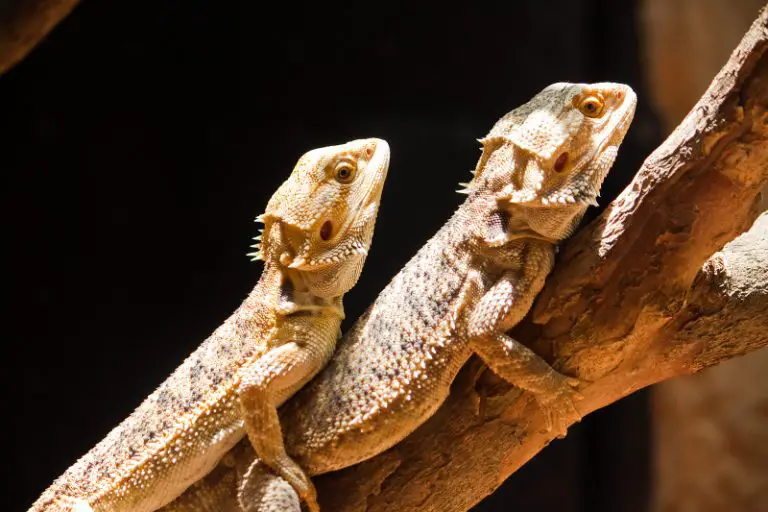Unveiling the Mysteries of the Red Bearded Dragon
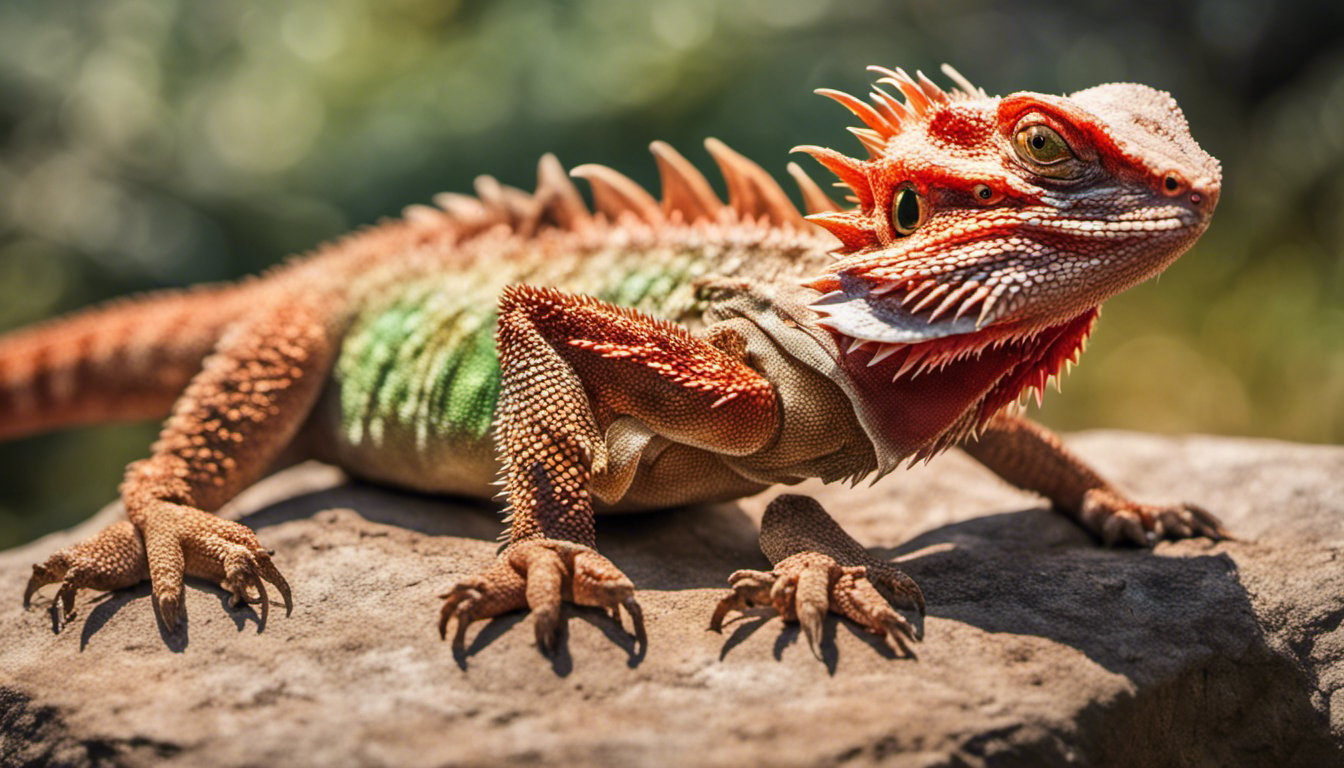
Red bearded dragons are popular and unique pet reptiles known for their fiery appearance and friendly temperament. But how can you ensure that your healthy friend lives a healthy, happy life? This guide provides essential information on every aspect of red bearded dragon care, from setting up the perfect habitat to providing a balanced diet, maintaining their health, and even tips on building a strong bond with your pet.
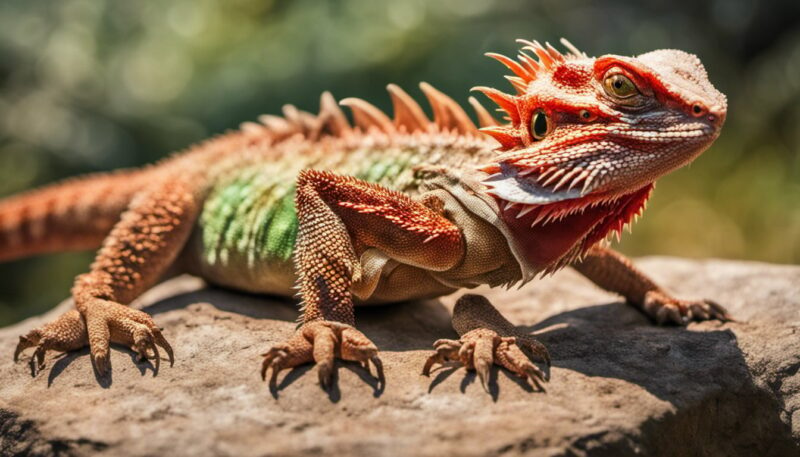
So, let’s embark on this fascinating journey to give your red bearded dragon the best possible care.
Contents
Table of Contents
Short Summary
Red Bearded Dragons are desirable pets because they look strikingly and require knowledgeable care.
Creating the ideal habitat involves knowledge of their natural environment, enclosure size & design, temperature, lighting & humidity levels, enrichment, and accessories.
Providing a balanced diet with appropriate supplements is essential for optimal health and regular vet checkups to monitor potential issues.
Understanding Red Bearded Dragons

Red bearded dragons, a morph of the common pet lizard (Pogona vitticeps), are sought after for their distinct red coloration, setting them apart from other bearded dragon morphs and even other red lizards. These red bearded dragons friendly pet reptiles boast a unique charm, making them a great choice for reptile enthusiasts who want a visually striking companion.
If you’re looking to buy red bearded dragons, you’ll be delighted by their captivating appearance and personality, especially when considering young bearded dragons as they grow and develop their vibrant colors.
However, owning a red bearded dragon is responsible for providing proper care, including a suitable habitat, balanced diet, and regular health checks, to ensure their well-being.
Origin and Appearance
The red bearded dragon is a result of selective breeding, which has led to its distinct red hue. These reptiles are captivating due to their variety of red shades. These include ruby-red, blood-red and sand-fire red. Like all bearded dragons, they possess a “beard”—a distinctive feature contributing to their name.
Their unique coloration makes them popular among reptile enthusiasts who desire a visually striking pet.
Unique Traits and Characteristics
Apart from their vivid red coloration, red-bearded dragons are known for:
Their placid temperament
Their intelligence
Being excellent pets for both new and experienced reptile keepers
They are generally larger than other bearded dragon morphs adding to their appeal.
Understanding their unique traits and characteristics is essential when considering a red bearded dragon as a pet to ensure you can meet their needs and provide the best possible care.
Creating the Ideal Habitat for a Red Bearded Dragon

Crafting the perfect habitat for your red bearded dragon involves:
Selecting an appropriate enclosure
Maintaining the right temperature, lighting, and humidity levels
Providing enrichment and accessories for mental and physical stimulation
By mimicking their natural environment, you can ensure that your red bearded dragon thrives in captivity.
Understanding these crucial elements allows you to create a comfortable and engaging space for your red bearded dragon to flourish.
Enclosure Size and Design
Choosing the right bearded dragon enclosure size is crucial for your red bearded dragon’s well-being. A minimum of 120cm long x 60cm high x 60 cm wide vivarium is recommended for an adult red bearded dragon, with a secure screen top to prevent escapes.
The enclosure should include suitable substrates, such as tile, newspaper, or reptile carpet, and avoid potential hazards like sand or fine gravel to prevent ingestion.
Incorporate climbing structures, such as rocks and branches, and hiding spots, like hollow logs and caves, to mimic their natural habitat and provide mental stimulation. Remember that male red bearded dragons should not be housed together; they may fight and inflict serious injuries.
Temperature, Lighting, and Humidity
Maintaining the proper environment is essential for your red bearded dragon’s health. Here are some guidelines to follow:
Daytime temperatures should range between 80–88 degrees Fahrenheit, with a basking spot of 95–105 degrees, creating a suitable temperature gradient for your red bearded dragon.
Nighttime temperatures can drop as low as 70 degrees.
UVB lighting is crucial for red bearded dragons, enabling them to process calcium and vitamin D, preventing metabolic bone disease.
Ensure a 12-hour photoperiod, with lights on for 12 hours and off for 12 hours. Maintain humidity levels between 40 and 60 percent by using a thermometer-hydrometer combination to monitor the enclosure.
Proper temperature, lighting, and humidity management contribute significantly to your red bearded dragon’s overall health and well-being.
Enrichment and Accessories
Providing enrichment and accessories within your red bearded dragon’s enclosure is vital for their mental and physical well-being. Here are some suggestions:
Incorporate climbing structures such as rocks, branches, and logs
Provide hiding spots like hollow logs, caves, and other structures
Basking rocks and logs are essential accessories for their comfort
Use small treat balls filled with greens and insects to offer opportunities for interaction and mental stimulation
These additions will help keep your red bearded dragon happy and healthy.
Regularly rotating their enclosure setup, hides, and climbing structures can also help keep your red bearded dragon engaged and content.
Feeding Your Red Bearded Dragon
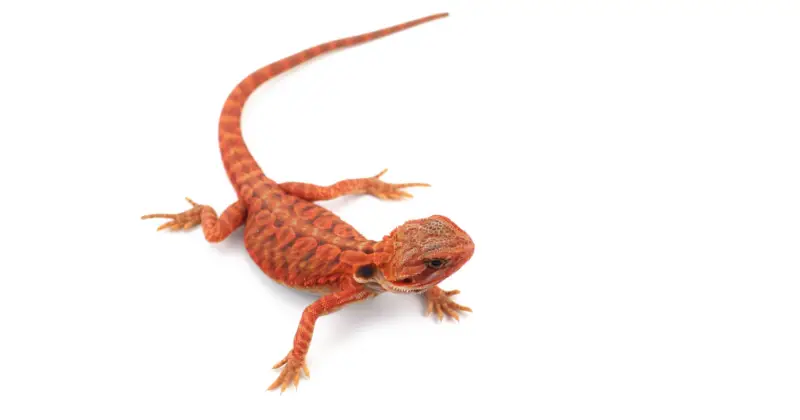
Feeding your red bearded dragon a balanced and nutritious diet is crucial to ensure its proper growth and overall health. A well-rounded diet consists of insects, fruits, and vegetables, with the right proportions and feeding frequency based on their age. Providing appropriate supplements and gut-loading insects before feeding can also contribute to your red bearded dragon’s well-being.
Understanding their dietary needs ensures your scaly friend receives all the essential nutrients for a healthy life.
Diet Composition
The diet of a red bearded dragon, also known as a bearded dragon’s diet, should consist of a balanced combination of vegetables, fruits, and insects. For an adult dragon, this typically means a diet composed of 80% plants and 20% insects. Safe vegetables and fruits to include in their diet are collard greens, mustard greens, bok choy, cabbage, kale, blueberries, bananas, apples, and strawberries.
Insects such as:
crickets
dubia roaches
hornworms
phoenix worms
super worms
mealworms
waxworms
grasshoppers
It should also be included as a source of protein. Providing a diverse and balanced diet ensures your red bearded dragon receives all the essential nutrients it needs.
Feeding Frequency and Portion Sizes
The feeding frequency and portion sizes for red bearded dragons vary depending on their age. Juveniles between the ages of 4 months and a year should consume between 20 and 40 crickets over the course of two feedings. Once they reach one year of age, adult bearded dragons should be fed once a day.
Adjusting their feeding frequency and portion sizes as they grow ensures that your red bearded dragon receives the right amount of nutrients for their age and size.
Supplements and Gut-Loading
Supplements like calcium, vitamin D3, and multivitamins with beta-carotene are essential for your red bearded dragon’s health and should be provided at least once a week. Gut-loading is another crucial aspect of your red bearded dragon’s diet.
This process involves feeding insects a nutritious diet at least 24-48 hours before feeding them to your beardie, ensuring they receive essential vitamins and nutrients.
Gut-loading and providing appropriate supplements are key components of a well-rounded diet that supports your red bearded dragon’s overall health and well-being.
Watch this Red Bearded Dragon:
Health and Wellness for Red Bearded Dragons
Monitoring the health and wellness of your red bearded dragon is an essential aspect of responsible pet ownership. Understanding common health concerns, such as shedding and brumation, and knowing how to support your dragon during these times is crucial.
Regular vet check-ups and addressing any potential health issues early on can help ensure a long, healthy life for your scaly companion. By being proactive about their health, you can provide the best possible care for your red bearded dragon.
Shedding and Brumation
Shedding, or ecdysis, is a natural process in which red bearded dragons shed their old skin to make way for new growth. Juveniles shed more frequently than adults, with full body sheds taking approximately 2 to 3 weeks. During shedding, your dragon may experience decreased appetite, lethargy, or irritability due to the energy-intensive process.
Brumation is another important aspect of red bearded dragon health. This period of dormancy typically lasts for several months during the winter season, during which your dragon may become less active and may cease eating.
By understanding shedding and bulbation, you can better support your red bearded dragon during these natural processes.
Common Health Issues
Common health issues faced by red bearded dragons include:
Metabolic bone disease
Mouth rot
Respiratory infections
Impaction
Parasites
It’s essential to keep a close eye on your dragon and observe any changes in appetite, behavior, or appearance that could indicate a potential health issue. By being proactive about your red bearded dragon’s health, you can address any potential concerns early on and ensure the best possible care for your pet.
Veterinary Care
Regular veterinary care is vital to maintaining your red bearded dragon’s health. It’s recommended that your dragon undergo the following:
An annual physical examination to assess their teeth and body condition and check for metabolic bone disease
A fecal analysis to detect any intestinal parasites
Bloodwork to evaluate internal organ function and calcium levels (for adult dragons)
By scheduling regular check-ups and seeking the help of a reptile specialist veterinarian, you can ensure your red bearded dragon receives the best possible care.
Bonding and Handling Your Red Bearded Dragon

Bonding with your red bearded dragon and learning how to handle it safely is essential to pet ownership. Establishing trust through positive associations, gradual handling, and proper support during handling can help create a strong bond between you and your scaly friend.
Understanding the best methods for handling and bonding with your red bearded dragon can ensure a positive and rewarding relationship with your pet.
Establishing Trust
Building trust with your red bearded dragon is crucial for a strong bond and a positive pet-owner relationship. Here are some tips to help you establish trust.
Hand-feed your dragon to create positive associations and build trust.
Offer rewards, such as treats or praise, when your dragon displays desired behaviors.
Handle your dragon gently and slowly to avoid causing stress or fear.
Be patient and consistent in your interactions, allowing your dragon to feel secure and comfortable in your presence.
Following these tips can build trust with your red bearded dragon and strengthen your relationship.
Building trust with your dragon can create a strong bond that will last a lifetime.
Safe Handling Techniques
Handling your red bearded dragon safely is important for you and your pet. Here are some steps to follow.
Place one hand under the chest near the front legs of your dragon.
Support its tail with the other hand.
Lift it up gently.
Always approach the tank calmly and make sure you’re visible.
Keep handling sessions brief to minimize stress on your dragon. Remember to wash your hands before and after handling your bearded dragon to prevent the spread of germs and maintain proper hygiene. Having paper towels nearby for easy cleanup during these sessions is a good idea.
Purchasing and Breeding Red Bearded Dragons

Acquiring and breeding red bearded dragons can be an exciting and rewarding venture for reptile enthusiasts. Whether you want to purchase a red bearded dragon or breed it yourself, understanding the process and requirements is essential. By following the right steps and providing proper care, you can ensure the health and well-being of your red bearded dragons throughout their lives.
It is important to research the species before making a purchase. Bearded dragons come in a cage.
Where to Buy
When purchasing a red bearded dragon, choosing a reputable breeder is highly recommended, as they are more likely to provide healthy and well-socialized animals and information about the dragon’s history and genetics. Pet stores may offer more affordable options, but the animals may not be as healthy or well-socialized.
When selecting a red bearded dragon, look for signs of good health, such as clear eyes, a full body, and a clean enclosure, as well as signs of good socialization, such as a willingness to be handled and a calm demeanor.
Breeding Process
You’ll need a pair of healthy adults, an appropriate habitat, and the right temperature and humidity levels to breed red bearded dragons. The male and female should be at least 18 months and 24 months old and have a minimum length of 18 inches.
The mating process can appear violent, and the female will carry the developing eggs for several weeks before laying them. A lay box, a plastic box lined with soil, is essential for the female to deposit her eggs, as bearded dragons are not notably maternal and may disregard the eggs once they have been laid.
You can successfully breed red bearded dragons by understanding the breeding process and providing proper care.
Summary
In conclusion, providing the best possible care for your red bearded dragon involves understanding their unique needs and requirements. From setting up the ideal habitat and providing a balanced diet to monitoring their health and building a strong bond, every aspect of red bearded dragon care is essential for their well-being. Following this comprehensive guide and staying proactive about their care can ensure a happy, healthy, and rewarding relationship with your red bearded dragon.
Frequently Asked Questions
Can bearded dragons be red?
Bearded Dragons can come in various shades of red since they were first bred after entering the reptile industry in the ’90s. They are morphs that have been bred in captivity, although some wild species may have specks and highlights of red.
What makes a bearded dragon red?
Staining from red materials in the environment or a diet with red-based foods can cause a bearded dragon to become red.
Do red bearded dragons like to be held?
Yes, bearded dragons can show signs of affection to their owners and often remain calm when held. They may even sit still on their owner’s lap, indicating that they can indeed enjoy being held.
Bearded dragons are social creatures and can form strong bonds with their owners. They can recognize their owners and may even show signs of excitement when they see them. They can also be used as well.
What is a morph bearded dragon?
Morph bearded dragons are reptiles that display various physical characteristics, such as body type, size, color, spikes, scales, head shapes, nail colors, and patterns. These characteristics can vary greatly from one morph to another, making them a popular choice for reptile enthusiasts. Morph bearded dragons are also known for their friendly and docile nature, making them great pets for both experienced and novice reptile owners.
What is the ideal temperature gradient for red bearded dragons?
Ideal daytime temperatures for red bearded dragons should range from 80-88°F, with a basking spot at 95-105°F. Nighttime temperatures can drop as low as 70°F.

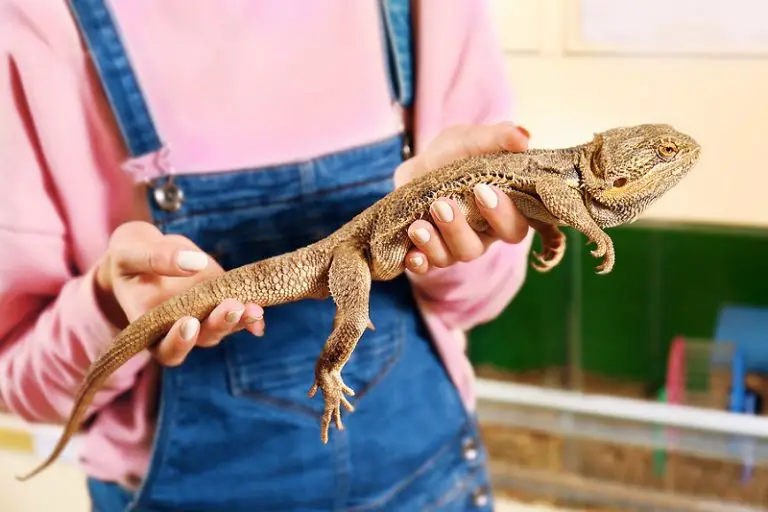
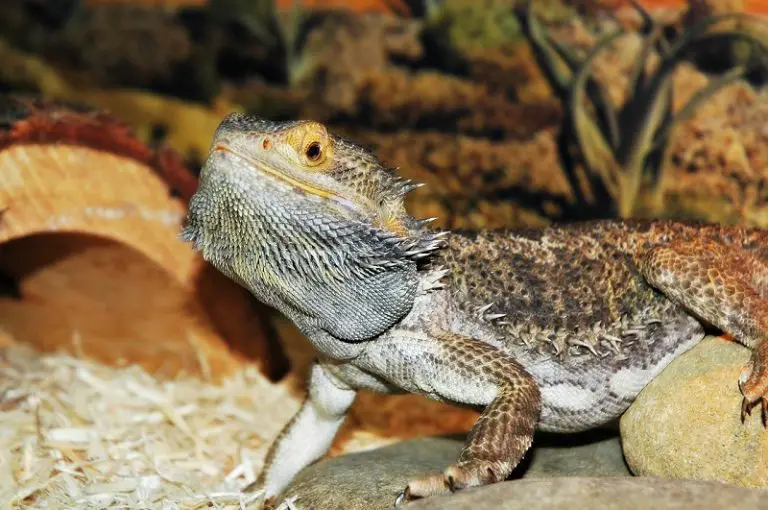
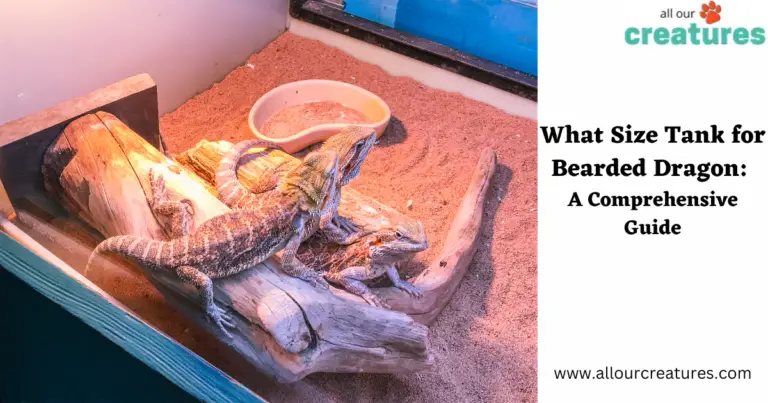
![Best Insects For Bearded Dragons [Must Read]](https://allourcreatures.com/wp-content/uploads/2021/10/bigstock-A-Bearded-Dragon-pogona-Sp-E-412949071-768x512.jpg)
